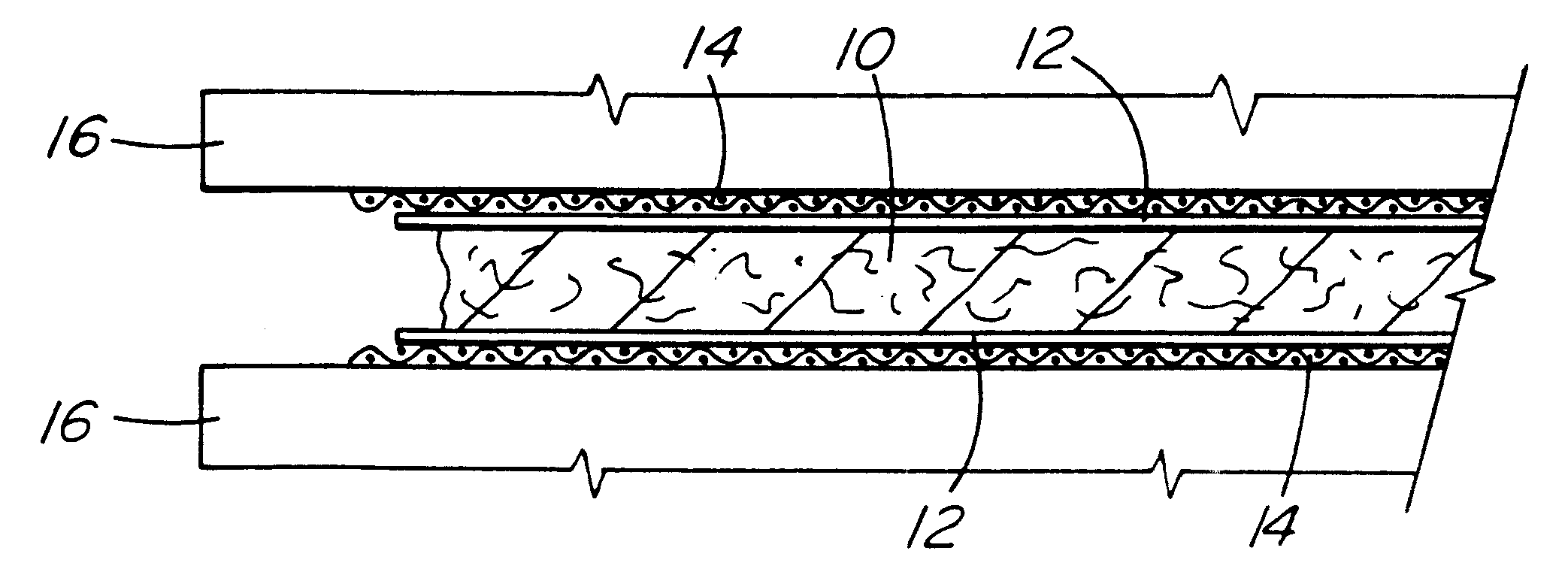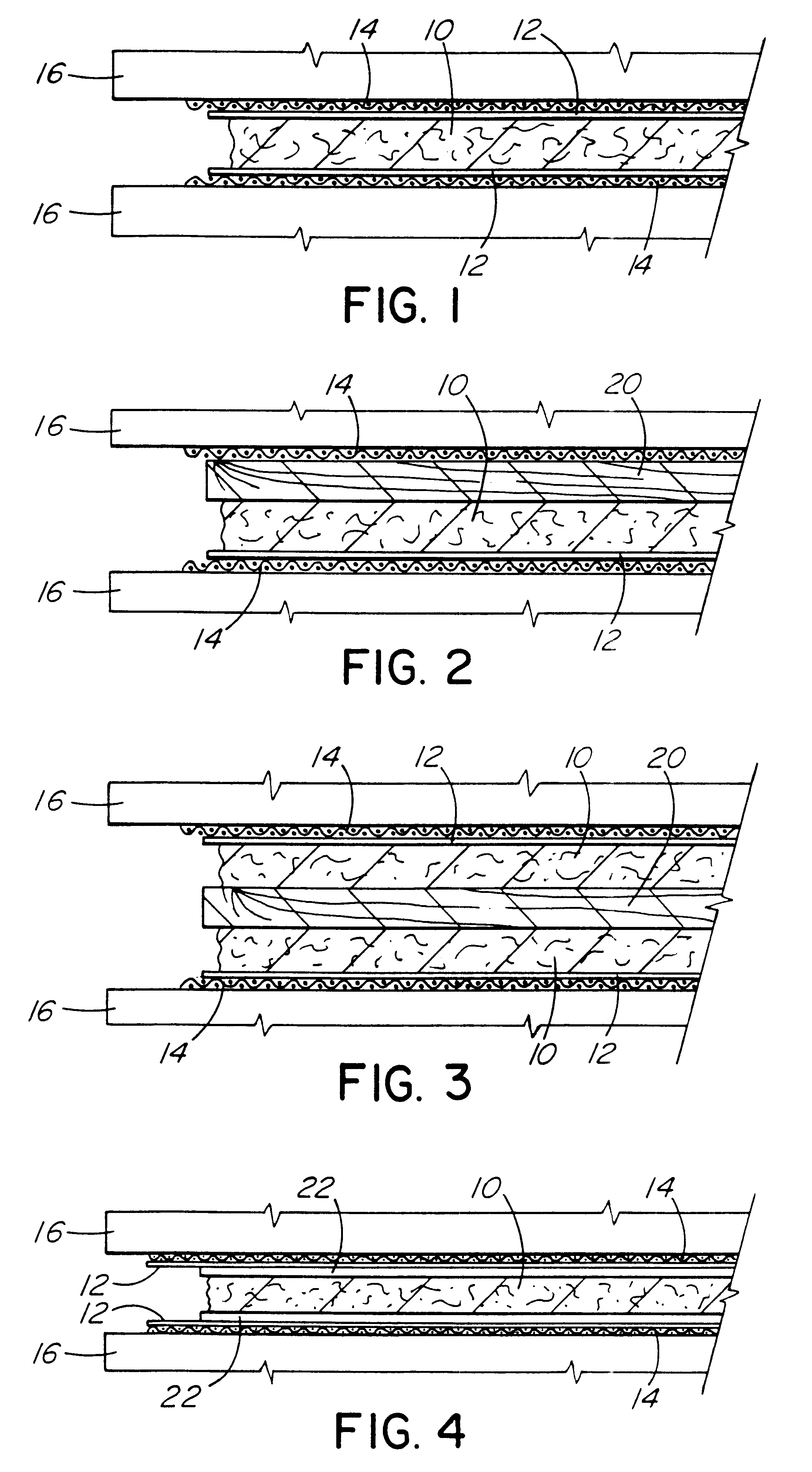Method for manufacturing an improved hog fuel board using a catalyst
a technology catalyst, which is applied in the field can solve the problems of increasing the commercial feasibility of hog fuel board products, unable to achieve market success of products, and high cost of vacuum step, so as to achieve greater strength in bending, internal bond strength, and greater strength
- Summary
- Abstract
- Description
- Claims
- Application Information
AI Technical Summary
Benefits of technology
Problems solved by technology
Method used
Image
Examples
Embodiment Construction
The preparation of hog fuel products according to the present invention involves drying hog fuel, which is approximately 70% to 95% bark by weight, the remainder being wood residues, to about 3% to 5% moisture content. The hog fuel is then ground in a Wiley mill or suitable grinder to pass a 5 mesh screen. Thus, the hog fuel has approximately 4 mm size particles. A catalyst in the form of ammonium chloride (NH.sub.4 Cl) is added to the hog fuel such that the mixture is about 1% to 7% ammonium chloride by weight. The preferred hog fuel consistency is about 80% bark and 3% ammonium chloride. It is also important that the ammonium chloride catalyst is added uniformly to the hog fuel mat. Preferably, this is achieved by dissolving the catalyst in a small volume of water and mixing the resulting solution thoroughly with the hog fuel. If the catalyst is not mixed uniformly throughout the hog fuel, there is a risk of explosive delamination of the board during the pressing stage. Non-unifor...
PUM
| Property | Measurement | Unit |
|---|---|---|
| size | aaaaa | aaaaa |
| temperature | aaaaa | aaaaa |
| pressure | aaaaa | aaaaa |
Abstract
Description
Claims
Application Information
 Login to View More
Login to View More - R&D
- Intellectual Property
- Life Sciences
- Materials
- Tech Scout
- Unparalleled Data Quality
- Higher Quality Content
- 60% Fewer Hallucinations
Browse by: Latest US Patents, China's latest patents, Technical Efficacy Thesaurus, Application Domain, Technology Topic, Popular Technical Reports.
© 2025 PatSnap. All rights reserved.Legal|Privacy policy|Modern Slavery Act Transparency Statement|Sitemap|About US| Contact US: help@patsnap.com


